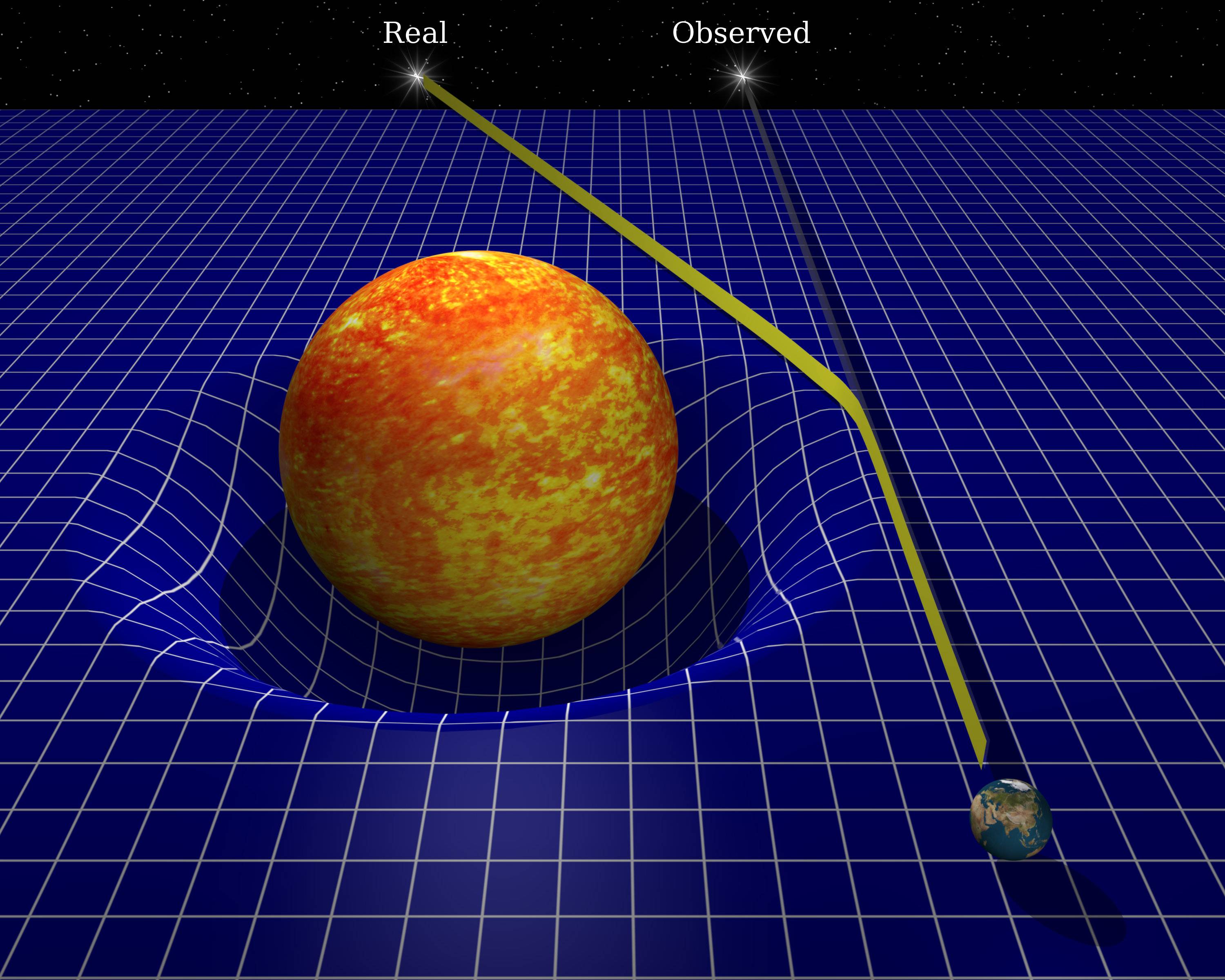Gravitational optics is very different from quantum optics, if by the latter you mean the quantum effects of interaction between light and matter. There are three crucial differences I can think of:
We can always detect uniform motion with respect to a medium by a positive result to a Michelson-Morley experiment that is confined to a region of spacetime small enough to be "flat". The same experiment in the same region does not detect such motion in freespace. In such a small enough region, light in freespace is always observed to travel at $c$;
Another important difference is that mediums and gravitational lenses are fundamentally different in their effect on the polarisation of light: I talk further about this below;
A related way of saying the same as in 1. is that a photon in curved space still always behaves as a massless particle. Photons propagating through a (non-freespace) medium are not pure photons, unless they are not interacting with the medium, in which case the medium is equivalent to freespace for this discussion. In a medium, the photon becomes a quantum superposition of pure photon and excited matter states, as discussed in my answer here. It is therefore a quasiparticle (called a polariton, or plasmon, or exciton, depending on the exact kind of medium and interaction spoken about) that always has a nonzero rest mass if you insist on thinking of it as a quasi-particle. The hot topic of "slow light" belongs in this picture, and says nothing contradicting the masslessness of light in freespace;
In quantum optics, almost always the interactions involve absorptions and re-emissions of different photons: quantum and classical optics are simply different approximations for the same kind of light-matter interaction, as categorised in my answer here. The cyclic "absorption-re-emission" picture is, albeit in different language, an equivalent way of thinking about the matter light interaction as the "polariton" quasi-particle, photon-matterstate quantum superpositon picture. The "polariton" picture diagonalises the Schrödinger picture so we talk in terms of eigenmodes: the absorption-re-emission picture keeps pure photons and matter states separate: since these are no long eigenstates, the Schrödinger picture paints the situation as a oscillation back and forth between these two.
On the other hand, gravitational optics is the propagation of light in "curved", but "empty" spacetime. Right now we would tend to describe a photon being gravitationally lensed by the free, but "curved" space Maxwell equations:
$$ {A^{ a }}_{ ; a } = 0;\;\Box A^{a} = {R^{ a }}_{ b } A^{ b }$$
where $A$ is the generalised Lorenz gauged four-potential and $R_{ a b } \ \stackrel{\mathrm{def}}{=}\ {R^{ s }}_{ a s b }$ is the Ricci curvature tensor, which you get from the solution of the vacuum Einstein field equations that prevails around the lensing object(s). The photon is here interacting locally with spacetime, not with the lensing "matter". Einstein's big gig (in GTR at least) was "locality": the notion that all physics is local and that there is no instantaneous action at a distance.
At the equation level, a crucial difference between Maxwell's equations in curved spacetime as opposed Maxwell's equations in a (potentially light bending) medium is that gravitational lensing manifests itself as a variation from place to place in the lightspeed $1/\sqrt{\mu\,\epsilon}$, but the "characteristic impedance" $\sqrt{\mu/\epsilon}$ stays constant everywhere (recall we're solving for geodesics over a wide region, so that, from a distant, nonlocal standpoint, lightspeed can vary from place to place - this is different from, and altogether consistent with, the generalised Equivalence Principle saying that spacetime is always locally Minkowskian with the same $c$). A light-bending medium on the other hand, unless it is very special, changes both $1/\sqrt{\mu\,\epsilon}$ and the "characteristic impedance" $\sqrt{\mu/\epsilon}$. Physically what this means is that the left and right handed polarised photon eigenstates in general couple together in a medium, whereas in gravitational lensing they never couple together no matter how "severe" the gravitational lensing may be. Pure left/ right handed polarised light stays left/right handed polarised in any gravitational lensing: inhomogeneous, light bending mediums almost always mix left and right handed components. See:
Iwo Bialynicki Birula, "Photon Wave Function", in "Progress in Optics" Vol XXXVI, E. Wolf Ed. 1996
particularly §11 of this work. I have often wondered about "simulating" gravitational lensing with inhomogeneous metamaterials whose characteristic impedance is constant, but I'm not even sure it is theoretically possible to make these.
Another key difference from "quantum optics" is that the photon propagates in curved spacetime and is not thought of as being absorbed and re-emitted as with its interactions with matter. So here the picture is much simpler (conceptually) than quantum optics (of course it's quite involved and tedious in actual calculation).
However (although I am well out of my depth here for details), it's possible that a future quantum theory of gravity will come up with a "graviton field", so that we would probably then be thinking of the photon's repeated absorption and re-emission by the graviton field, which would be a picture that is more like our conception today of quantum optics.
See also some pithy discussions of some of the other differences between medium bending of light and gravitational lensing here: as Jitter amusingly puts it "Could I burn space ants?". The answer, to the space ants' collective relief, is no.
BTW I don't like that diagram of diffuse transmission, with "photons" bouncing all over the place like bullets. It seems to be quite fashionable nowadays to talk about "ballistic" photons (which I don't really understand): see my answer here for some idea of why I don't like the diagram. Diffuse transmission is still a version of what I talk about there, only a bit more complicated because the distribution of matter is more "jagged".






